The decoration of the facade of a private house is thought out by its owner and designer at the design stage. Since the building is the main element of the landscape, it is necessary to use the most modern materials for finishing its walls, which are characterized by increased resistance to the influence of external factors. When creating a sketch of the future housing, you need to think carefully about its color scheme. To do this, you can study photos of various buildings made in the yards of friends and acquaintances. This will allow you to choose the most optimal facade finishing option. The cladding of the house is not only its kind of visiting card, but also the primary protection from the influence of the environment.
Facade finishing requirements
The modern construction market offers a huge variety of materials for exterior wall decoration. It is quite easy to get lost in such a variety. But the choice of the method of finishing the facade must be approached carefully and thoughtfully. Don't go chasing cheap products or materials that are easy to work with. It should be remembered that the decoration of the facade of a private house must fulfill its purpose for many years, while maintaining its beauty and presentability. 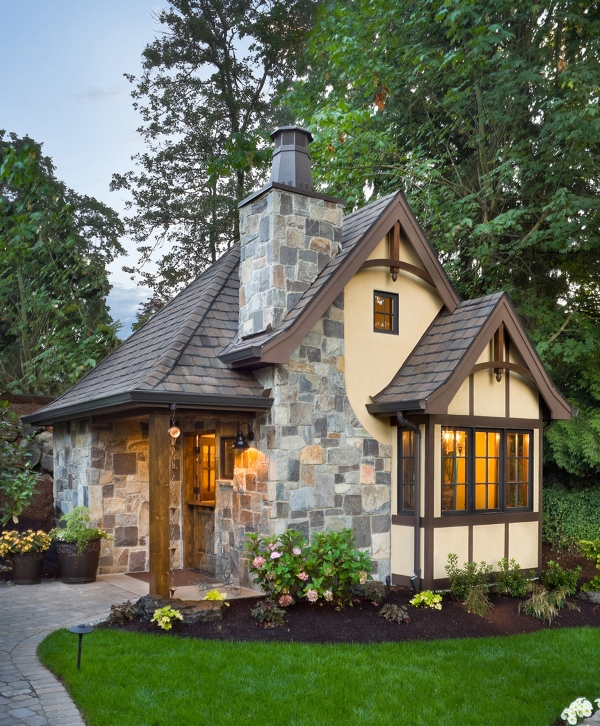
Facade cladding should have the following practical properties:
- Waterproof. This is the main quality that affects the life of the building and the comfort of living in it;
- Strength. Finishing materials for facades must be purchased so that they withstand strong blows from people or falling objects;
- Thermal insulation. Thoughtful finishing of the facade of a private house will protect the room from the cold in winter and keep it cool in the summer heat;
- Hygiene. The finishing materials must be resistant to mold, mildew and decay.
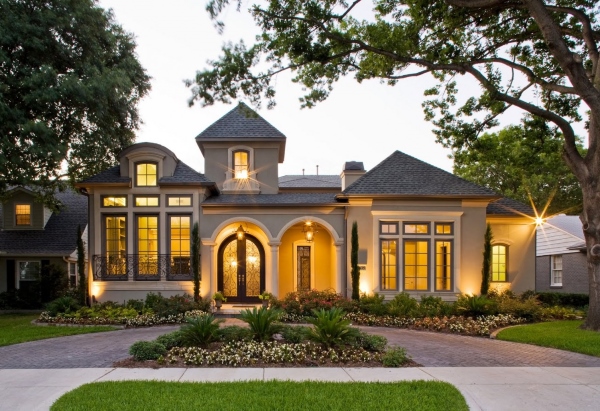 Some materials for the facade of a private house practically do not allow sound to pass through. This factor must be taken into account if the house is located on a noisy street with heavy traffic. Peace and quiet in the rooms is necessary for both adults and children.
Some materials for the facade of a private house practically do not allow sound to pass through. This factor must be taken into account if the house is located on a noisy street with heavy traffic. Peace and quiet in the rooms is necessary for both adults and children.
There are various options for finishing the external walls of residential buildings. The choice depends on the conditions of their operation, the environment and the material capabilities of the property owners. Consider the features of the main materials that are used for cladding the facades of private houses. 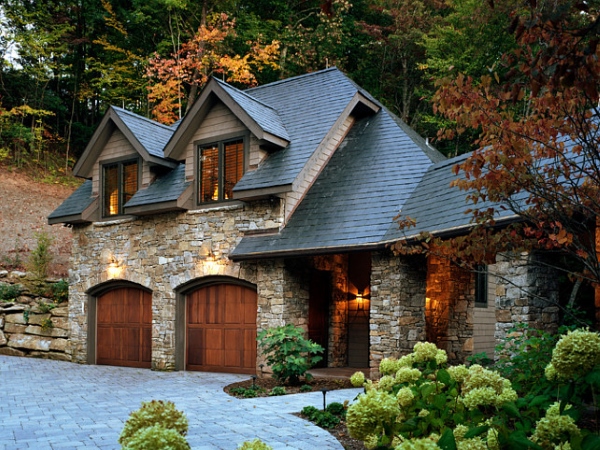
Decorative plaster
Modern building mixtures based on gypsum and cement are the most common material for finishing a residential building built of bricks and foam blocks. To improve the thermal insulation qualities, various fillers and plasticizers are added to the mixture. Facade plaster can be smooth and textured. Based on this, the methods of its application to the bearing surface differ. The addition of various dyes to the solution allows you to give the walls any color and shade. 
The main advantages of facade plaster for facing country houses are as follows:
- water resistance;
- aesthetics;
- resistance to low and high temperatures;
- ease of application to walls;
- incombustibility.

Mineral, silicate and acrylic plaster is used for the facade of the house. Certain disadvantages of these materials are the complex technology of preparation of the bearing surface and low resistance to mechanical stress.
Clinker tiles
Clinker tiles are made from natural materials. It can be smooth or textured to imitate the surface of a natural stone. 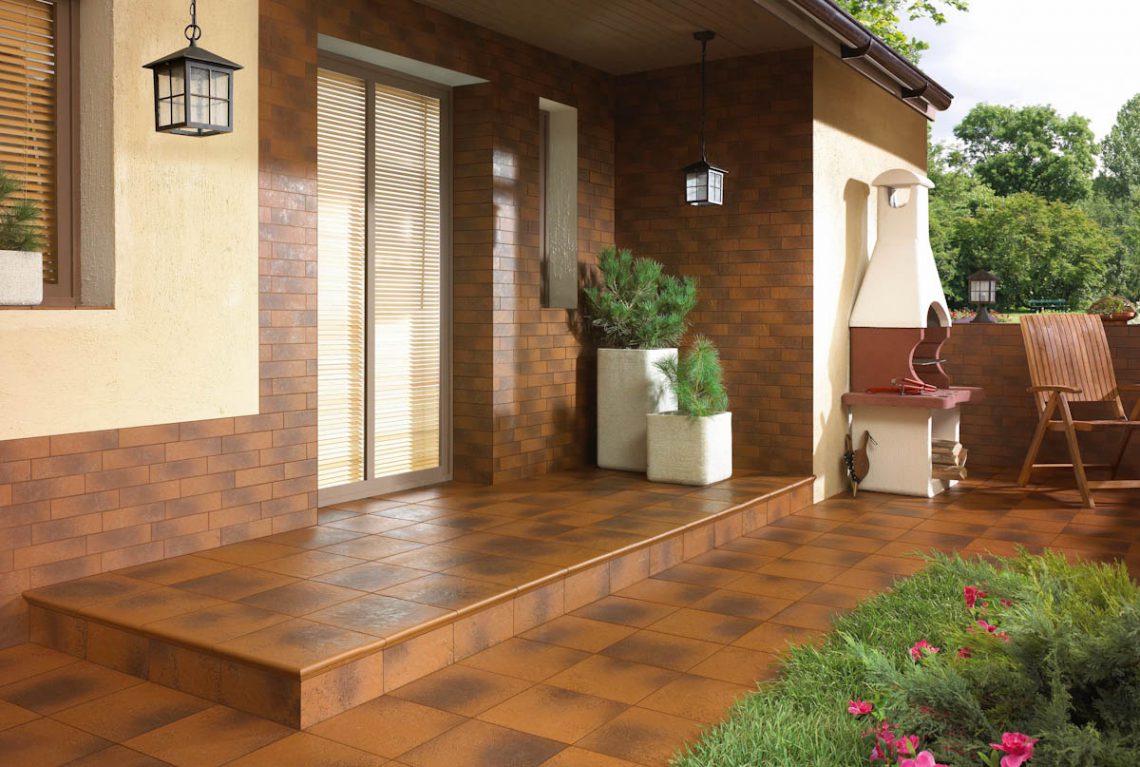
The main advantages of clinker bricks are:
- High strength. The clinker can withstand the most extreme mechanical stress without losing its aesthetic characteristics.
- Ease of maintenance. The tile surface can be washed with any detergent and solvent.
- A variety of colors and textures. For home decoration options for laying clinker, you can choose the most unusual and original.
- Durability. If the laying technology is observed, clinker tiles can last for several decades. In case of damage to individual fragments, they can be easily replaced with new ones.

The disadvantages of this material include its high cost and difficulty in laying.
Facade panels
Facade panels for exterior decoration of the house are distinguished by a solid list of advantages. Today, the production of these products in the widest range has been established. In addition to purely decorative functions, facade panels for exterior decoration of a house perform tasks of insulating and waterproofing a building. As a rule, the panels are installed in a ventilated façade system. This allows you to create a durable and aesthetic surface without preliminary and expensive repairs to the walls of the house. Installation of facade panels is carried out on a frame made of wooden beams or steel profiles. 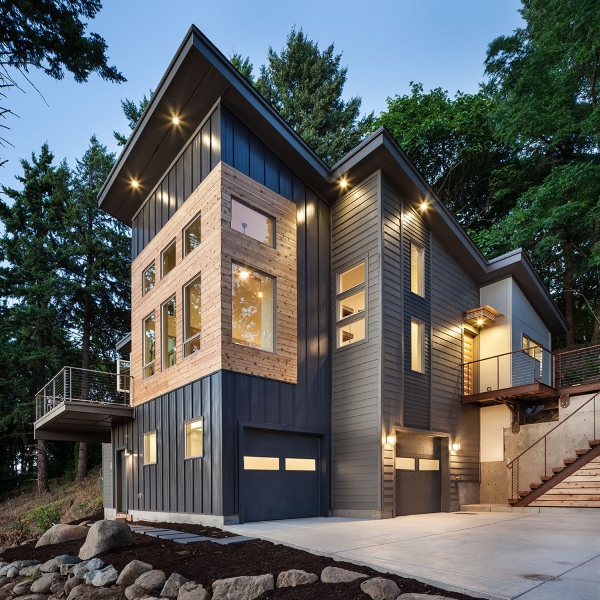
The most popular material for building cladding is sandwich panels. They are products consisting of insulation located between two sheets of metal or plastic.
The advantages of sandwich panels are as follows:
- ease;
- ease of use;
- resistance to corrosion, mold and decay;
- low thermal conductivity;
- long service life;
- waterproofness.
 A damaged panel can be replaced quickly and easily. Despite the fact that the cost of the products is quite high, this disadvantage is compensated by the absence of the need to use solutions and dyes.
A damaged panel can be replaced quickly and easily. Despite the fact that the cost of the products is quite high, this disadvantage is compensated by the absence of the need to use solutions and dyes.
Porcelain stoneware
Porcelain stoneware is a modern finishing material made from polymer raw materials. The use of various dyes and fillers allows designers to create porcelain tiles and blocks with a wide variety of patterns and colors. Porcelain stoneware very faithfully imitates materials such as natural stone (basalt, marble, granite) and natural wood. The physical properties of this material are quite high. 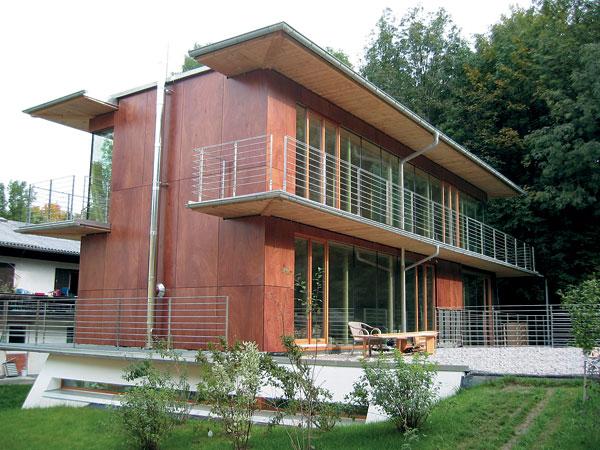
It has the following advantages:
- high strength;
- long service life;
- waterproof;
- resistance to solar radiation;
- immunity to mold and mildew.
The main advantage of porcelain stoneware over tiles is its uniformity throughout the volume. So, chips and scratches do not violate the integrity of its surface. They are easy to grind and polish, after which the surface acquires its original presentability. 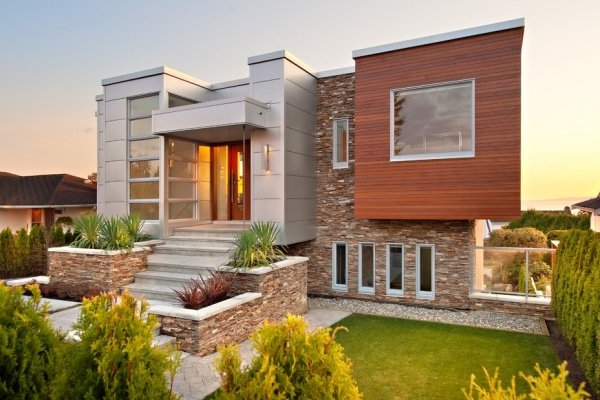
The decoration of the building with porcelain stoneware has its own characteristics. If it is attached directly to the wall, then a special synthetic glue must be used. Another way of facade cladding is fixing the tiles to a metal frame equipped with special clips.
Siding
As a rule, decorative panels are used for the arrangement of residential buildings. They are made of metal or polymer plastic. The most practical is siding made from PVC. Installation of panels is carried out on a wooden or steel frame.
Since siding does not provide a complete seal, it is recommended to use a material that is resistant to moisture as insulation. In addition, PVC panels have a fairly high coefficient of thermal expansion. In order to prevent deformation or destruction of the siding surface during strong temperature changes, a sliding type of fastening of panels to the frame is used. 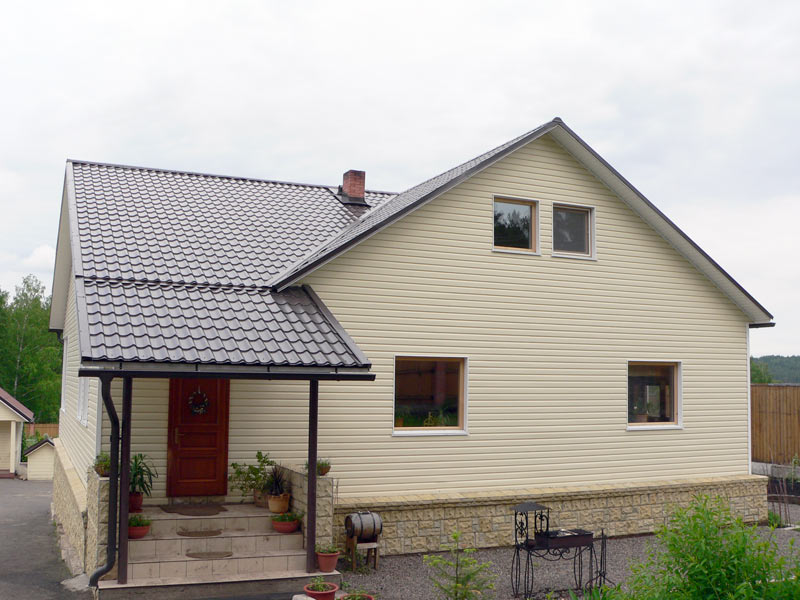
The advantages of facing panels are as follows:
- high aesthetic qualities;
- strong enough to withstand strong impacts and pressure;
- affordable cost;
- simplicity and high speed of installation;
- long service life.
 The panels really imitate natural wood, natural stone, brick or decorative plaster.
The panels really imitate natural wood, natural stone, brick or decorative plaster.
Photo gallery
We present to your attention a successful selection of 27 photo ideas for decorating the facade of a private house.




